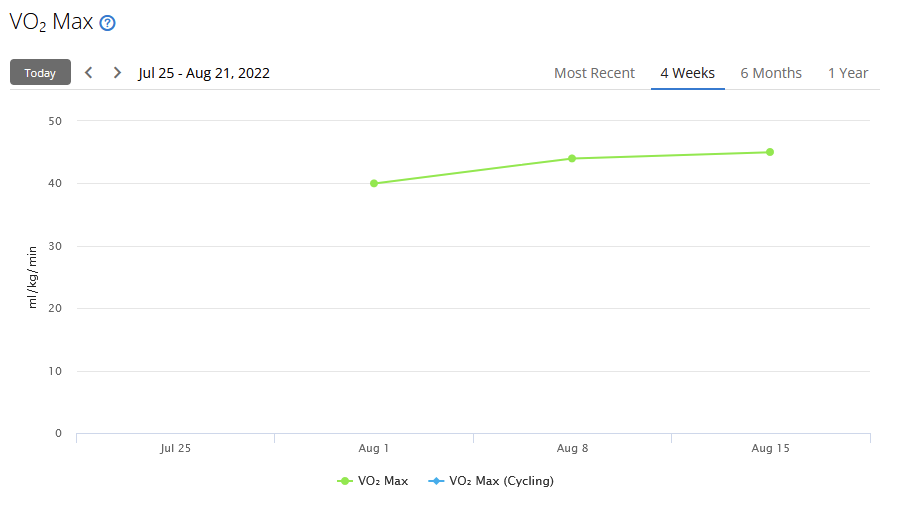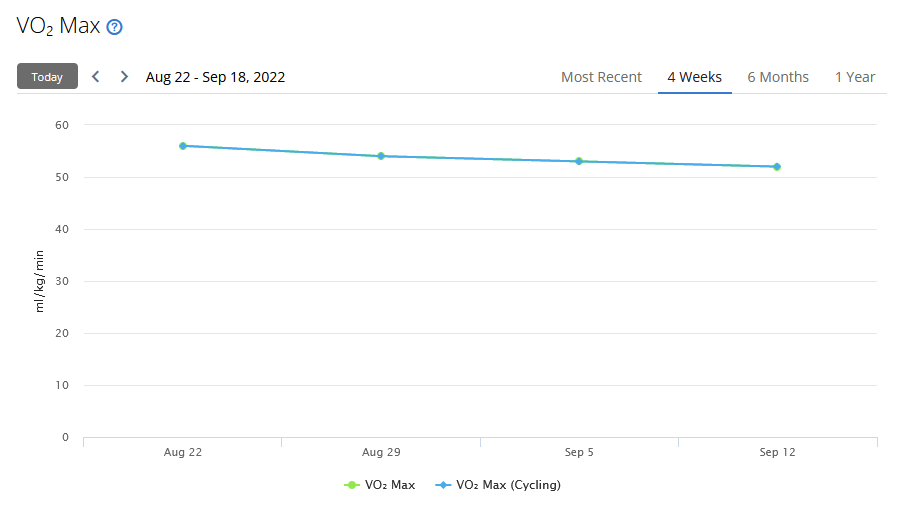My watch popped up that to update my VO2, I need to run for 10 minutes. A lot of times I only run for 5-8 minutes a session. Does that mean my VO2 will never update?
My watch popped up that to update my VO2, I need to run for 10 minutes. A lot of times I only run for 5-8 minutes a session. Does that mean my VO2 will never update?
Garmin's VO2 can be calculated through different activities : running, trail running, multisport, biking, walking, and all-day HR estimate on newer watches (like the Epix?).
There are specific criteria for each type of qualifying activity to be able to provide a VO2 max, and there are fall-back rules if a type of VO2 becomes unavailable for more than 30 days.
So, if your running activities don't qualify to provide a VO2 Max, maybe your biking, walking or trail running will, or maybe not.
For example, if you have only one qualifying run, and you don't have any other qualifying run for 30 days, but you have a cycling one, the watch will take the cycling VO2 max and make it your main VO2 Max value, but will continue tracking both VO2 Max values for running and cycling when updates come up.
If you don't run, bike or walk at all, I gather from the documentation that the Epix 2 will provide a VO2 Max based on all-day HR data.
Where does one see a walking VO2? Never knew that was a thing
You see it when there is no running VO2 max and no cycling VO2 Max. See below: after a foot fracture in June I stopped all running and cycling, then in August I started walking again. The first VO2 Max you see is that walking VO2 Max....

... that lasted for 2 to 3 weeks until I could get onto an indoor bike again and get a cycling VO2 Max that superseded the walking one....
.. ... after it picked up the last cycling VO2 Max (~56) that dated from the week of the accident. It went downhill from there, so to speak.
... after it picked up the last cycling VO2 Max (~56) that dated from the week of the accident. It went downhill from there, so to speak.
Last week I went for a quick run that lasted 8 mins and something. The watch updated my VO2 when I looked at training status after it.
But I don't always get VO2 updates, even with longer runs.